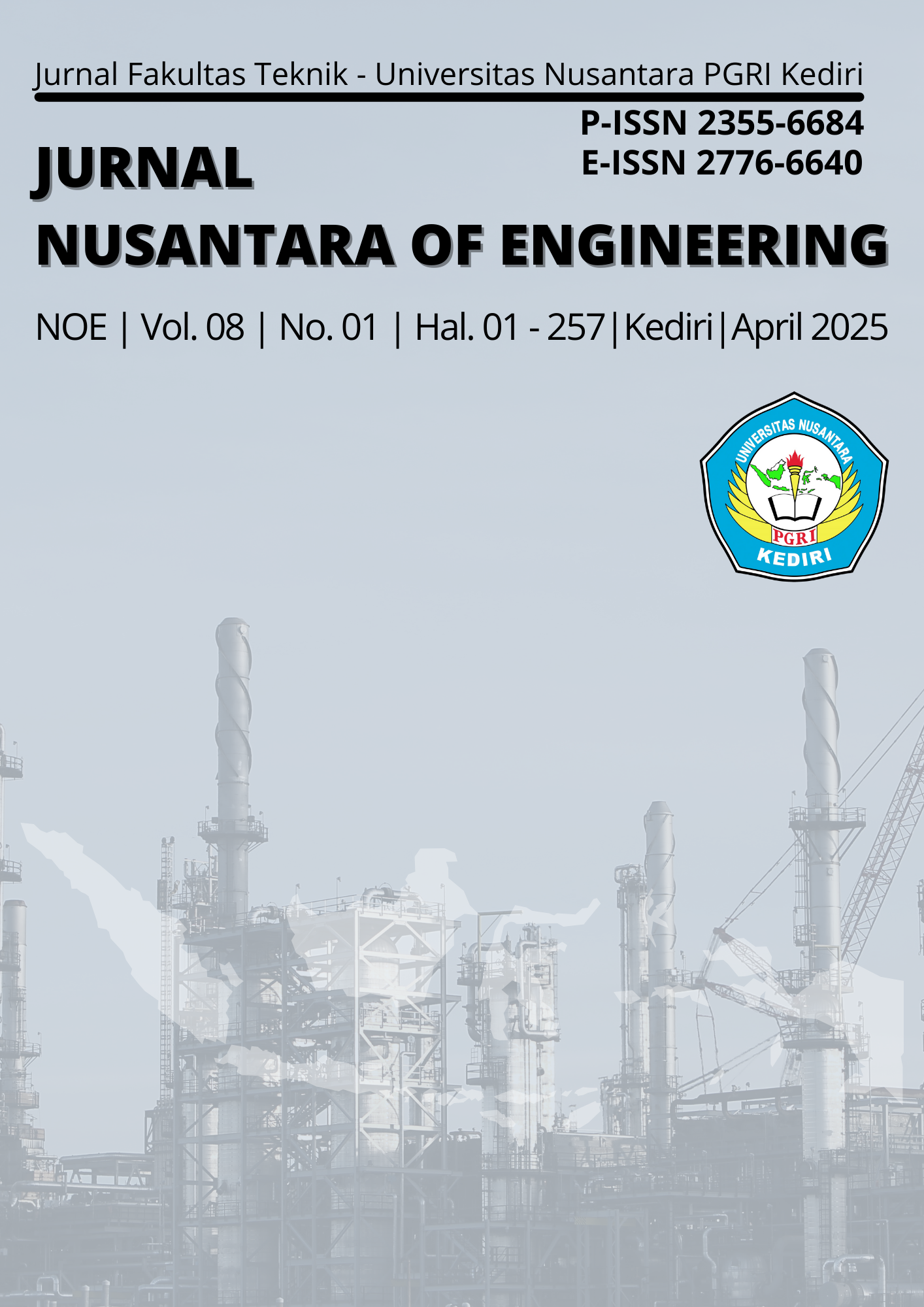Sistem Bantu IMPLEMENTASI GEOFENCING UNTUK SISTEM PRESENSI KARYAWAN DARI LUAR KANTOR PADA BADAN PERTANAHAN KAB. NGANJUK
Rekayasa Perangkat Linak
DOI:
https://doi.org/10.29407/noe.v8i01.23387Keywords:
Employee Presence, Waterfall, Mobile Android, Geofencing.Abstract
In today's digital era, efficient employee attendance management remains a crucial challenge for organizations, especially those with staff who work remotely or in different locations. This study overcomes the inefficiency of the manual attendance process at the Nganjuk Regency National Land Agency (BPN) through the development of an Android-based attendance application. By utilizing geofencing technology, this system increases data accuracy, efficiency and security. This research uses the waterfall method to adopt a systematic approach. The research results, in the form of attendance to verify employee locations, show the potential of technology-based solutions in increasing organizational productivity.
Downloads
References
Asmara, d. P., faizah, n., & kambry, m. A. (2023). Aplikasi Presensi Kehadiran Online Pada Karyawan PT. Bringin Karya Sejahtera Dengan Metode Location-Based Service Menggunakan Android Studio Dan Mysql. Design journal, 1(1), 64–71. Https://doi.org/10.58477/dj.v1i1.58
Aziz, m. A. (2024). Aplikasi Informasi Lokasi Bencana Berbasis Android. Jurnal nusantara of engineering, 7(1). Https://ojs.unpkediri.ac.id/index.php/noe
Ceme, d., faizah, n., & koryanto, l. (2023). Aplikasi Presensi Kehadiran Guru Di SMKN Pakisjaya Berbasis Face Recognition Menggunakan Opencv. Jurnal indonesia : manajemen informatika dan komunikasi, 4(1), 1–7. Https://doi.org/10.35870/jimik.v4i1.104
Citra alvonita, t., & santoso, b. (2023). Sistem Pengenalan Wajah Dengan Metode Template Matching Untuk Absensi Kelas Berbasis Web. Brahmana: jurnal penerapan kecerdasan buatan, 4(2), 106–113.
Harini Dwi, Kasih. P. (n.d.). Aplikasi Bantu Sistem Informasi Dan Rute Rumah Sakit Di Kota Kediri Dengan Local Based Service(LBS). 2017.
Himyar muhammad, f. M. M. , h. J. H. S. R. (2021). Aplikasi Absensi Karyawan Berbasis Android Dengan Penerapan Qr Code Disertai Foto Diri Dan Lokasi Sebagai Validasi: Studi Kasus PT.Selindo Alpha. Jurnal sistem komputer dan kecerdasan buatan, iv.
Muhamad, t., suhardi, s., & priyandaru, h. (2022). Sistem Informasi Absensi Karyawan Pada CV. Manha Digital Berbasis Android. Jurnal teknik informasi dan komputer (tekinkom), 5(1), 60. Https://doi.org/10.37600/tekinkom.v5i1.378
Nugroho, e. S. (2022). Sistem Presensi Mahasiswa Praktek Kerja Lapangan Dengan Fitur Location Base Service (Lbs) Menggunakan Metode Prototyping.
Priono, j., & setiawan, e. B. (2017). Implementasi geofencing dalam mengawasi pengiriman kendaraan di sebuah perusahaan ekspedisi. 106 ultimatics, ix(2).
Sunggono, n. T., retno mariana, a., & adiratna, d. R. (2023). Aplikasi absensi karyawan rumah zakat metode geofance berbasis android. In ajcsr [academic journal of computer science research (vol. 5, issue 1).
Vianto, z. P., & yulia, e. R. (n.d.). Sistem Informasi Kehadiran Karyawan Berbasis Android Menggunakan Metode Geofencing Pada PT. Gemilang Anugrah Permata. Http://jurnal.bsi.ac.id/index.php/co-science
Wahyudi, a. (2024). Peran Dan Tanggungjawab Badan Pertanahan Nasional Dalam Perlindungan Hukum Pemegang Hak Milik Atas Tanah Di Atas Hak Pengelolaan Di Kota Batam.
Downloads
Published
Issue
Section
License
Copyright (c) 2025 Wahyu Tia Fitriyana, Patmi Kasih, Danar Putra Pamungkas

This work is licensed under a Creative Commons Attribution-ShareAlike 4.0 International License.
Authors who publish with this journal agree to the following terms:
- Copyright on any article is retained by the author(s).
- The author grants the journal, right of first publication with the work simultaneously licensed under a Creative Commons Attribution License that allows others to share the work with an acknowledgment of the work’s authorship and initial publication in this journal.
- Authors are able to enter into separate, additional contractual arrangements for the non-exclusive distribution of the journal’s published version of the work (e.g., post it to an institutional repository or publish it in a book), with an acknowledgment of its initial publication in this journal.
- Authors are permitted and encouraged to post their work online (e.g., in institutional repositories or on their website) prior to and during the submission process, as it can lead to productive exchanges, as well as earlier and greater citation of published work.
- The article and any associated published material is distributed under the Creative Commons Attribution-ShareAlike 4.0 International License








